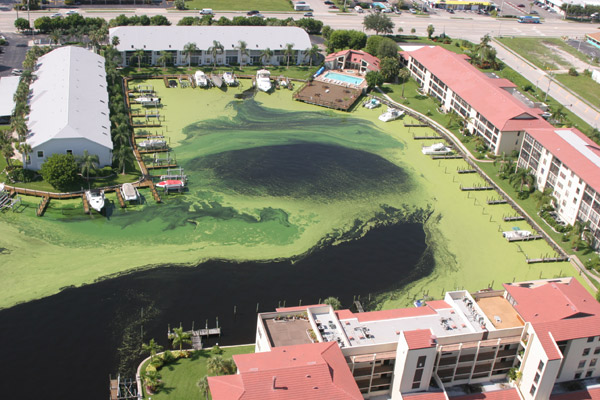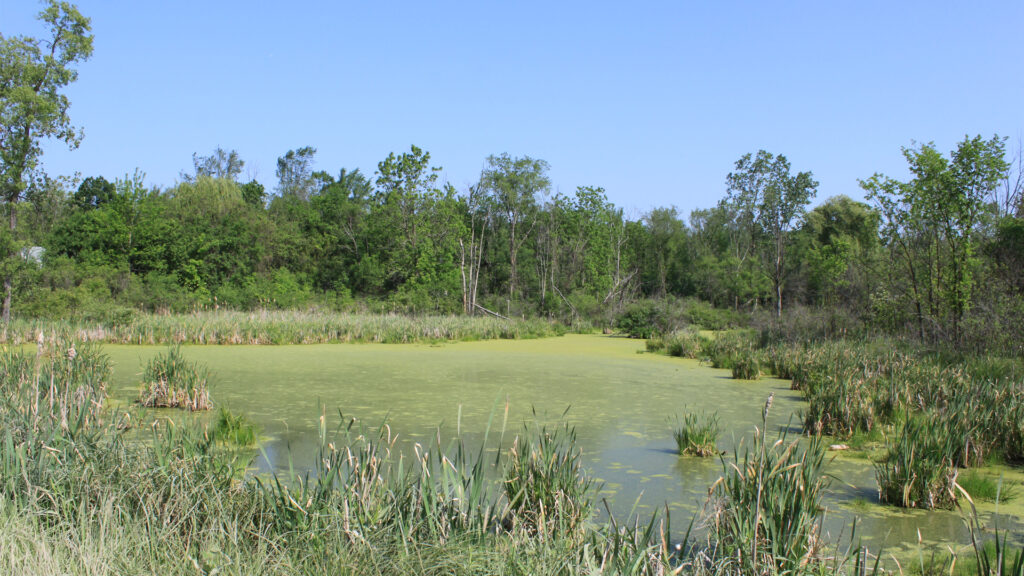By Jane Marsh, Environment.co
Floridians might not realize it, but the Florida Department of Environmental Protection (DEP) can help fend off harmful algal blooms if it updates its stormwater rules.
Blooms negatively impact the local ecosystem, so action is necessary. With improvements to current regulations, the department can potentially prevent these harmful events from happening.
What makes algal blooms possible?

While algae blooms take on a variety of appearances, they typically look like foam or scum on the surface of still or slow-moving water. They may seem harmless, but many Floridians know how dangerous they are. Florida’s red tide — capable of killing wildlife and harming humans — is caused by an alga that has been around since the 1840s.
Algal blooms can happen when there are imbalances in nutrients in the water. They are caused by nutrient pollution, which happens when bodies of water get too much nitrogen and phosphorus. It usually occurs because stormwater washes pollutants into the water that encourage algae growth.
Stormwater runoff naturally carries pollutants, but humans are affecting the amount. While blooms have been around naturally for decades, they are becoming more frequent and intense because of human environmental impact. Businesses and individuals can cause excess contaminants in runoff. The DEP must intervene to prevent the issue of harmful algae from getting worse.
Why should DEP update its rules?
Updated rules are necessary because much of Florida is affected by stormwater runoff. A DEP water quality assessment found over 50% of Florida’s water was polluted in 2022. Since people and wildlife are both affected by algal blooms, it is essential to keep pollutants out of water.
Additional rules can stop the water from becoming contaminated if they address the source of algal blooms instead of simply working to prevent them. Action is necessary because Florida may soon have to deal with an increase in nutrient pollution.
The DEP anticipates stormwater runoff increasing due to the estimated 14,000 projects it will permit in the next five years. Construction uses certain chemicals and erodes the soil, contributing to polluted runoff. Since there are thousands of potential new projects, updated rules are critical for protecting the future of Florida’s waters.
How is DEP preventing algal blooms?
The DEP has several regulations limiting or monitoring stormwater pollution to prevent harmful algal blooms. Since the runoff carries excess nutrients that make algae grow incredibly quickly, stopping it from happening can protect Florida’s waters.
The DEP is fending off harmful algal blooms with updated rules that:
- Limit stormwater runoff: Stormwater runoff carries pollution, so preventing the runoff from getting into bodies of water helps prevent blooms.
- Prevent future pollution: Since various businesses can cause pollution that contributes to algal blooms, the rules set strict guidelines that force them to reduce the amount they can pollute.
- Track harmful algal levels: Tracking algal levels lets the DEP recognize if they need to intervene to prevent a harmful bloom. It also may lead them to the source of the pollution, which prevents future issues.

The main ways to prevent algal blooms involve limiting human environmental impact and monitoring toxic algae growth. While they can still happen with DEP regulations in place, improved regulations can significantly reduce their negative impact.
Florida has introduced new rules throughout the years as the source of runoff pollution has shifted. For example, one of the rulings requires the removal of 80% of pollutants at a minimum, ensuring organizations are held accountable for their part in creating blooms. It authorized the department to monitor, control and remove harmful blooms.
How can DEP prevent algal blooms?
The DEP is already doing a lot to prevent algal blooms, but some feel that even the newer rules need improvements. For example, environmental activists argue it fails to keep nutrient pollution out of waterways. Their critique focuses on agriculture and wastewater systems that are typically overlooked.
Increased enforcement of current regulations and improvements that broaden the department’s reach would help address the criticism and potentially protect waterways. While it is working to prevent land development projects from polluting bodies of water, updated rules about other infrastructure can help further protect Florida against harmful algal blooms.
Updated stormwater rules can fend off algal blooms

Algal blooms will always happen because they can be caused naturally, but the DEP can limit how often they appear with updated stormwater rules. Upcoming land development projects, the agriculture industry and wastewater management all contribute significantly to nutrient pollution, so the department could improve current regulations by including them.
There are already great rules in place, but a few updates may help protect Florida’s waterways.
Jane Marsh is an environmental journalist and the editor-in-chief of Environment.co.
If you are interested in submitting an opinion piece to The Invading Sea, email Editor Nathan Crabbe at ncrabbe@fau.edu.



